ELECTRICITY GENERATOIN
 |
| Turbo generator |
Electricity generation is the method of generating electric powered strength from resources of number one electricity. For utilities inside the electric power industry, it's far the level prior to its delivery (transmission, distribution, etc.) to quit users or its storage (using, as an example, the pumped-storage approach).
Electricity isn't always freely to be had in nature, so it need to be "produced" (that is, transforming different varieties of energy to power). Production is accomplished in power stations (additionally referred to as "electricity vegetation"). Electricity is most usually generated at a strength plant by way of electromechanical mills, more often than not pushed by using heat engines fueled by way of combustion or nuclear fission however also by way of other means which includes the kinetic energy of flowing water and wind. Other electricity assets include sun photovoltaics and geothermal power.
Phasing out coal-fired power stations and subsequently gas-fired power stations, or capturing their greenhouse gas emissions, is an critical part of the energy transformation required to limited climate exchange. Vastly extra solar power and wind power is forecast to be required, with power call for growing strongly with similarly electrification of transport, homes and industry.
History
 |
| Levelized cost: With more and more considerable implementation of renewable energy sources, fees for renewables have declined, most extensively for power generated by using sun panels. Levelized cost of energy (LCOE) is a degree of the average net gift value of power technology for a generating plant over its lifetime. |
The essential concepts of energy technology have been discovered in the 1820s and early 1830s by means of British scientist Michael Faraday. His technique, nevertheless used today, is for power to be generated by using the motion of a loop of wire, or Faraday disc, among the poles of a magnet. Central electricity stations became economically practical with the improvement of alternating current (AC) strength transmission, using power transformers to transmit electricity at excessive voltage and with low loss.
Commercial energy production started out with the coupling of the dynamo to the hydraulic turbine. The mechanical production of electric electricity started out the Second Industrial Revolution and made feasible several inventions the usage of energy, with the most important contributors being Thomas Alva Edison and Nikola Tesla. Previously the best manner to provide power was by using chemical reactions or the usage of battery cells, and the most effective sensible use of power was for the telegraph.
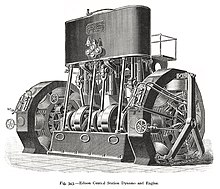 |
| Dynamos and engine hooked up at Edison General Electric Company, New York 1895 |
Electricity era at crucial power stations started out in 1882, while a steam engine using a dynamo at Pearl Street Station produced a DC contemporary that powered public lights on Pearl Street, New York. The new generation become quickly followed through many cities round the arena, which tailored their gas-fueled road lighting to electric powered power. Soon after electric powered lighting fixtures might be utilized in public buildings, in agencies, and to strength public shipping, inclusive of trams and trains.
The first power vegetation used water energy or coal. Today a selection of energy sources are used, which includes coal, nuclear, natural gas, hydroelectric, wind, and oil, in addition to solar energy, tidal energy, and geothermal sources.
In the 1880s the popularity of power grew vastly with the advent of the Incandescent light bulb. Although there are 22 known inventors of the light bulb previous to Joseph Swan and Thomas Edison, Edison and Swan's invention became by way of a ways the maximum successful and popular of all. During the early years of the 19th century, huge jumps in electrical sciences have been made. And via the later nineteenth century the advancement of electrical era and engineering brought about energy being a part of ordinary life. With the creation of many electric innovations and their implementation into ordinary life, the demand for energy inside homes grew dramatically. With this boom in call for, the potential for Profit was visible by using many entrepreneurs who started out making an investment into electrical systems to in the end create the first strength public utilities. This method in records is regularly defined as electrification.
The earliest distribution of strength got here from agencies working independently of one another. A purchaser could purchase power from a manufacturer, and the manufacturer would distribute it thru their very own electricity grid. As era stepped forward so did the productiveness and efficiency of its technology. Inventions including the steam turbine had a huge effect on the efficiency of electrical generation but also the economics of generation as nicely. This conversion ofheat power into mechanical work turned into just like that of Steam engines, but at a appreciably larger scale and a long way extra productively. The improvements of those massive-scale technology flowers had been important to the technique of centralised era as they would turn out to be crucial to the complete strength system that we now use today.
Throughout the center of the 20th century many utilities started merging their distribution networks because of monetary and performance blessings. Along with the discovery of long-distance power transmission, the coordination of electricity plants started to form. This gadget became then secured by means of regional gadget operators to make sure stability and reliability. The electrification of homes began in Northern Europe and inside the Northern America within the Nineteen Twenties in huge towns and concrete regions. It wasn't until the Nineteen Thirties that rural regions noticed the massive-scale establishment of electrification.
Method of generation
Several fundamental strategies exist to transform different styles of power into electric strength. Utility-scale technology is carried out by rotating electric generators or via photovoltaic systems. A small share of electric electricity disbursed by means of utilities is provided through batteries. Other forms of electricity era utilized in area of interest programs encompass the triboelectric effect, the piezoelectric impact, the thermoelectric effect, and betavoltaics.
Generator
Electric generators rework kinetic power into energy. This is the most used shape for generating strength and is based totally on Faraday's law. It may be seen experimentally through rotating a magnet inside closed loops of carrying out material (e.G. Copper twine). Almost all business electric era is executed using electromagnetic induction, in which mechanical energy forces a generator to rotate.
Electrochemistry
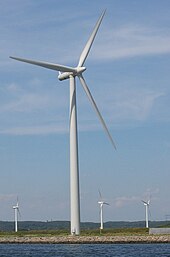 |
| Wind turbines normally offer electric technology together with other techniques of producing strength. |
Electrochemistry is the direct transformation of chemical energy into electricity, as in a battery. Electrochemical strength generation is crucial in portable and cellular packages. Currently, most electrochemical power comes from batteries. Primary cells, which includes the common zinc–carbon batteries, act as electricity sources directly, but secondary cells (i.E. Rechargeable batteries) are used for garage structures in preference to number one technology systems. Open electrochemical systems, referred to as fuel cells, may be used to extract power either from natural fuels or from synthesized fuels. Osmotic power is a opportunity at places where salt and sparkling water merge.
Photovoltaic effect
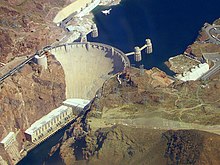 |
| Large dams, such as Hoover Dam inside the United States, can provide huge amounts of hydroelectric power. It has an set up potential of two.07 GW. |
The photovoltaic effect is the transformation of light into electric electricity, as in solar cells. Photovoltaic panels convert daylight at once to DC energy. Power inverters can then convert that to AC power if wished. Although sunlight is unfastened and plentiful, solar power electricity remains normally extra pricey to produce than huge-scale routinely generated energy because of the cost of the panels. Low-performance silicon sun cells were decreasing in cost and multijunction cells with close to 30% conversion performance are actually commercially available. Over 40% efficiency has been verified in experimental structures. Until lately, photovoltaics had been most generally utilized in far flung websites in which there's no access to a industrial electricity grid, or as a supplemental power source for person homes and businesses. Recent advances in manufacturing efficiency and photovoltaic era, blended with subsidies pushed by using environmental worries, have dramatically improved the deployment of solar panels. Installed ability is growing with the aid of 40% consistent with 12 months led by using will increase in Germany, Japan, United States, China, and India.
Economics
The selection of power manufacturing modes and their economic viability varies according with demand and region. The economics vary notably around the sector, ensuing in massive residential promoting charges, e.G. The fee in Iceland is five.54 cents according to kWh at the same time as in a few island countries it's far 40 cents in keeping with kWh. Hydroelectric plants , nuclear power plants , thermal electricity vegetation and renewable sources have their personal execs and cons, and selection is primarily based upon the neighborhood power requirement and the fluctuations in demand. All strength grids have varying hundreds on them but the each day minimal is the bottom load, often supplied through vegetation which run continuously. Nuclear, coal, oil, gas and a few hydro vegetation can deliver base load. If properly production fees for herbal fuel are underneath $10 in step with MWh, producing electricity from herbal gasoline is less expensive than generating strength by way of burning coal.
Thermal energy can be in your price range in regions of high commercial density, because the high demand can't be met by using local renewable sources. The impact of localized pollution is also minimized as industries are usually located faraway from residential areas. These flowers also can withstand variant in load and consumption by way of including extra gadgets or temporarily decreasing the manufacturing of a few devices. Nuclear energy plants can produce a huge quantity of strength from a single unit. However, nuclear screw ups have raised issues over the safety of nuclear electricity, and the capital price of nuclear flowers may be very high. Hydroelectric electricity plant life are positioned in regions wherein the potential strength from falling water can be harnessed for transferring generators and the generation of energy. It might not be an economically viable unmarried supply of manufacturing where the potential to shop the drift of water is restricted and the load varies an excessive amount of throughout the yearly manufacturing cycle.
Due to improvements in generation, and with mass manufacturing, renewable resources aside from hydroelectricity (solar power, wind power) experienced decreases in value of manufacturing, and the energy is now in lots of instances as luxurious or less high-priced than fossil fuels. Many governments round the sector provide subsidies to offset the better price of any new power production, and to make the set up of renewable energy structures economically feasible.
Generating equipment
 |
| A large generator with the rotor removed |
Electric mills were recognised in easy paperwork from the discovery of electromagnetic induction in the 1830s. In general, some shape of prime mover such as an engine or the turbines described above, drives a rotating magnetic area beyond stationary coils of twine thereby turning mechanical electricity into power. The best business scale energy manufacturing that does not hire a generator is solar PV.
Turbines
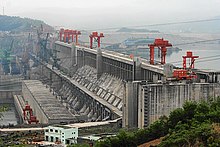 |
| Large dams which includes Three Gorges Dam in China can provide big amounts of hydroelectric energy; it has a 22.5 GW capability. |
Almost all industrial electric power on Earth is generated with a turbine, driven through wind, water, steam or burning fuel. The turbine drives a generator, as a consequence transforming its mechanical electricity into electric strength by electromagnetic induction. There are many distinct methods of developing mechanical power, which include heat engines, hydro, wind and tidal electricity. Most electric technology is pushed by using heat engines. The combustion of fossil fuels supplies most of the electricity to those engines, with a giant fraction from nuclear fission and a few from renewable sources. The present day steam turbine (invented with the aid of Sir Charles Parsons in 1884) currently generates about eighty% of the electric energy inside the world the use of a diffusion of warmth assets. Turbine types include:
* steam
* Water is boiled via coal burned in a thermal power plant. About forty one% of all strength is generated this way.
* Nuclear fission warmness created in a nuclear reactor creates steam. Less than 15% of energy is generated this manner.
* Renewable power. The steam is generated with the aid of biomass , solar thermal energy, or geothermal power.
* Natural gas: mills are driven without delay through gases produced by way of combustion. Combined cycle are driven via each steam and natural fuel. They generate electricity by using burning herbal gas in a gas turbine and use residual warmth to generate steam. At least 20% of the world's power is generated by natural gasoline.
* Water Energy is captured by means of a water turbine from the motion of water - from falling water, the rise and fall of tides or ocean thermal currents (see ocean thermal energy conversion). Currently, hydroelectric plants provide about 16% of the sector's strength.
* The windmill turned into a completely early wind turbine. In 2018 around five% of the sector's energy became made out of wind.
Although mills are most not unusual in business energy generation, smaller mills can be powered via gasoline or diesel engines. These might also used for backup generation or as a top source of electricity inside remoted villages.
Production
Total worldwide gross manufacturing of energy in 2016 turned into 25,082 TWh. Sources of energy have been coal and peat 38.3%, herbal gasoline 23.1%, hydroelectric sixteen.6%, nuclear power 10.4%, oil 3.7%, solar/wind/geothermal/tidal/different five.6%, biomass and waste 2.3%.
Historical results of production of electricity
 |
| Energy Flow of Power Plant |
Production by country
The United States has long been the biggest manufacturer and client of power, with a worldwide proportion in 2005 of at least 25%, followed by way of China, Japan, Russia, and India. In 2011, China overtook the US to come to be the biggest producer of strength.
Environmental concerns
Variations between international locations generating electric power affect concerns approximately the surroundings. In France handiest 10% of electricity is generated from fossil fuels, the US is higher at 70% and China is at eighty%. The cleanliness of power relies upon on its supply. Most scientists agree that emissions of pollutants and greenhouse gases from fossil fuel-primarily based energy generation account for a widespread portion of worldwide greenhouse gas emissions. In america, fossil gasoline combustion for electric powered power era is accountable for 65% of all emissions of sulfur dioxide, the main factor of acid rain. Electricity technology is the fourth highest mixed source of NOx, carbon monoxide, and particulate count number inside the US.
According to the International Energy Agency (IEA), low-carbon power generation needs to account for eighty five% of world electrical output by using 2040 so that you can keep off the worst outcomes of weather alternate. Like different companies which include the Energy Impact Center (EIC) and the United Nations Economic Commission for Europe (UNECE), the IEA has referred to as for the expansion of nuclear and renewable power to fulfill that objective. Some, like EIC founder Bret Kugelmass, agree with that nuclear power is the number one method for decarbonizing energy generation because it is able to additionally strength direct air capture that gets rid of present carbon emissions from the surroundings. Nuclear power flora can also create district heating and desalination projects, restricting carbon emissions and the want for increased electrical output.
A fundamental problem concerning centralised generation and the current electrical generation techniques in use today is the widespread negative environmental results that a few of the technology approaches have. Processes which include coal and fuel now not handiest launch carbon dioxide as they combust, but their extraction from the ground also affects the environment. Open pit coal mines use big regions of land to extract coal and restriction the potential for efficient land use after the excavation. Natural fuel extraction releases big quantities of methane into the ecosystem while extracted from the floor substantially boom global greenhouse gasses. Although nuclear energy flora to no longer launch carbon dioxide thru strength era, there are large risks related to nuclear waste and protection concerns associated with using nuclear resources. This fear of nuclear electricity stems from big-scale nuclear catastrophes consisting of the Chernobyl Disaster and the Fukushima Daiichi nuclear disaster. Both tragedies led to vast casualties and the radioactive contamination of large regions.
Centralised generation
Centralised technology refers the not unusual procedure of strength generation thru big-scale centralised facilities, through Transmission lines to client. These centers are normally located some distance far from consumers and distribute the power thru high voltage transmission strains to a substation in which it is then distributed to consumers. The simple concept being that surprisingly big stations create energy for a large organization of people. The Vast majority of power used is constituted of Centralised Generation. Most Centralised Power Generation comes from massive electricity flora run with the aid of fossil fuels together with coal or natural fuel. Nuclear or large hydroelectricity flowers are also generally used. Many disagree with the techniques of Centralised Generation because it frequently is predicated on electrical generation through techniques of the combustion of fossil fuels, which can be awful for the surroundings. However unsustainable the present day system is, it's miles through far the most broadly used, reliable and green device this is currently in use.
Centralised Generation is basically the alternative of distributed generation. Distributed era is the small-scale technology of electricity to smaller companies of clients. This also can include independently generating power by means of both solar or wind electricity. In latest years Distributed technology as has visible a spark in popularity due to its propensity to use renewable energy generation techniques consisting of wind and solar.
Technologies
Centralised strength sources are big Thermal energy stations that produce big quantities of power to a huge variety of customers. This is the traditional way of producing energy. Almost all electricity flowers utilized in centralised technology are thermal energy flowers meaning that they use a gasoline to warmth steam to provide a pressurised gasoline which in turn spins a turbine and generates electricity. This manner relies on several sorts of generation to produce massive electricity, these being herbal coal, fuel and nuclear types of thermal technology.
Coal
Coal electricity stations produce steam by means of burning coal dug up from the earth. This steam, below intensely high-stress forces into a turbine. These generators are linked to generators that spin at excessive speeds creating strength. Following the technology, the steam is cooled lower back into water to be heated all over again to provide strength. A single coal electricity plant can produce electricity for 700,00 houses, however, can use up to 14,000 tonnes of coal an afternoon to warmth its boiler.
The fundamental troubles concerning the use of coal in power technology is to with the Greenhouse gasses launched by the burning of coal, and the limited amount of coal in the world, leading many to agree that could be a very unsustainable way of manufacturing power.
Natural gas
Natural fuel is ignited to create pressurised gas that's used to spin mills to generate power. Natural gasoline vegetation use a gas turbine in which natural gas is brought along side oxygen which in flip combusts and expands through the turbine to force a generator to spin.
Natural fuel strength plants are more efficient than coal electricity generation, they but make contributions to weather trade however now not as relatively as coal era. Not only do they produce carbon dioxide from the ignition of natural gasoline, but also the extraction of gasoline while mined releases a widespread quantity of methane into the atmosphere.
Nuclear
Nuclear power plants life create strength via the method of nuclear fission. Currently nuclear strength produces 11% of all energy inside the world. Nuclear reactors use uranium as a supply of gasoline to power the reactors. When those nuclear atoms are break up a sudden release in energy is formed and may be transformed into heat. This technique is known as nuclear fission. Electricity is created via the use of a nuclear reactor where warmness produced via nuclear fission is used to supply steam which in turn spins generators and powers the mills. Although there are several types on nuclear reactors, however all fundamentally use this method.
Although nuclear power produces little or no emissions, numerous accidents at some stage in history have led many to invest the safety and hazard related to those vegetation. Accidents such as the Chernobyl disaster and the Fukushima Daiichi nuclear disaster have led many to disagree with the practice of nuclear energy generation.
Uses
Although there may be variant in the amount of power wished at all times, the bottom load is the minimal amount of energy required at one time, this is the majority of all strength[citation needed] and should be created by means of huge electricity stations which have the capacity to run all day, each day. Only Nuclear, coal, oil, gas and some hydro plant life can reliably supply the base load. Many greener strategies rely closely on variables including the sun and wind and as a result their output varies an excessive amount of to help the bottom load.
Highly industrial areas have a tendency to be powered almost entirely by means of thermal energy plants which includes coal or fuel-powered flowers, as their massive energy output is essential to strength enterprise inside the vicinity. The localised impact of pollution is likewise minimum as commercial areas are generally a ways from suburban regions. The plant life also can deal with massive version in power output by way of adjusting the production of the mills.
Large thermal electricity plant life produce the significant majority of power for residential regions, even though there was an growth in renewable sources of power, it nonetheless only makes up round eight% of all power fed on. However, these renewable assets of strength, useful resource in fluctuations of power demand as they're regularly smooth to modify the output required to fulfill the needs of the grid. Through Transmission line most of the people of strength is sent to residential regions.
Features
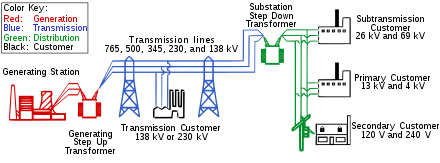 |
| Diagram of an electric power grid using Centralised Generation Method |
The overall quantity of energy used fluctuates depends exceptionally on factors which includes the time of the day, date and the climate. When demand varies operators should range total output from the energy flowers. This is usually executed via collaboration with different electricity flowers consequently preserving on power grid in an equilibrium. This provides a trouble for the entire power grid as it's miles often tough to alter the strength output of big thermal power flowers. Although perplexing and regularly inefficient, Centralised technology is the most famous way of energy production and distribution within the world. The 3 essential factors of centralised era are: technology, transmission and distribution.
Generation
Electricity is generated all through the sector in many ways the use of a diffusion of assets. The 3 maximum common resources used are natural gas, nuclear and coal. But renewable assets of era are quickly growing. The most commonplace manner to generate power is thru the transformation of kinetic energy into energy through massive Electric turbines. The large majority of electrical generation is produced via electromagnetic induction, in which mechanical energy through a turbine drives a generator rotate to supply electricity.
Often utilities need to buy greater power thru a wholesale market from a rival software or wholesale store, this is brokered and organised by means of a nearby transmission reliability corporation. It is vital for utilities to supply power far faraway from purchasers because the flora are big and release giant greenhouse gasses. Thus, there may be a prime procedure of transporting power from the generation vegetation to purchasers.
Centralised generation vs distribution generation
Centralised generation vs allotted technology is a controversy that has lately surfaced, with many claiming that centralised technology is a way of the beyond and that disbursed technology is the future of strength manufacturing. Distributed Generation is the technique of small-scale manufacturing of power regularly through individuals having their own manner of manufacturing electricity that they then use. Distributed energy is normally described as using environmentally sustainable practices which include sun or wind against nuclear, fuel or coal. An instance of this would be sun panels on one's residence or a small neighborhood strength producer. Distributed electricity is generally seen as a long way better for the surroundings as it does now not use huge thermal combustion to provide electricity. It also does not depend on a community of power grids which can often be unreliable and depart many without energy. Over the past few years many there was a main increase inside the use of Distributed Generation as many governments are selling using this technology thru subsidies as a way of lowering greenhouse emissions. But others say that the economies of scale of centralised generation outweigh the transmission costs.
WRITTEN BY : ADRISH WAHEED
Labels: ELECTRICITY GENERATOIN



0 Comments:
Post a Comment
Subscribe to Post Comments [Atom]
<< Home